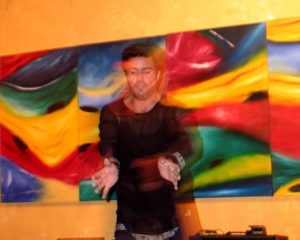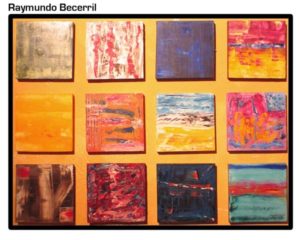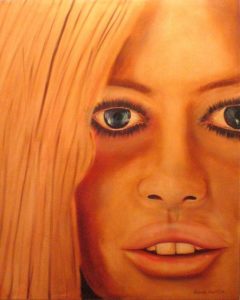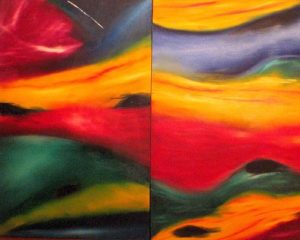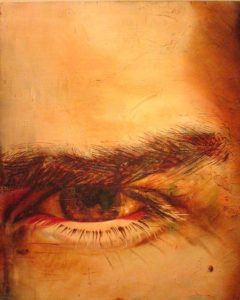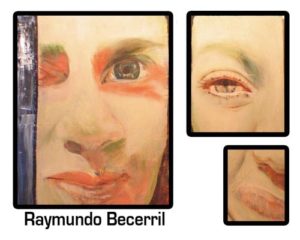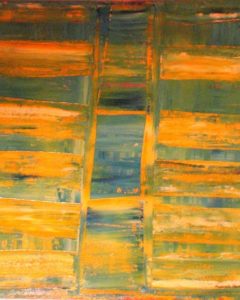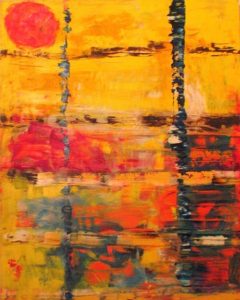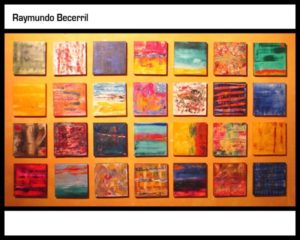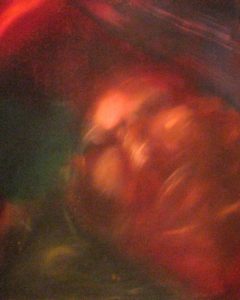Exploring Mexico’s Artists and Artisans
“The faculty of being is born in the habit of creating,” says multi-talented artist Raymundo Becerril Porras, whose very life seems to personify this idea. Creation, after all, is an integral part of who he is, with his career encompassing that of painter, dancer and writer. As Becerril notes, “for me, art is my life.”
At times, this frenetic interest in a multitude of different creative outlets has invited derision from others, as Becerril explains. “There are people who think that I dedicate myself to various things and that I don’t make anything out of those various things,” he says. But Becerril lightheartedly notes that once these critics see his artwork, they tell him he should dedicate himself to painting and then when they watch him dancing, they tell him he should focus on dance, and finally when they read what he has written, they tell him he should put his energies into writing. As for Becerril, he plans to keep doing all three. “I definitely cannot put the brakes on my career as an artist,” he says. “Nobody can put the brakes on it right now.”
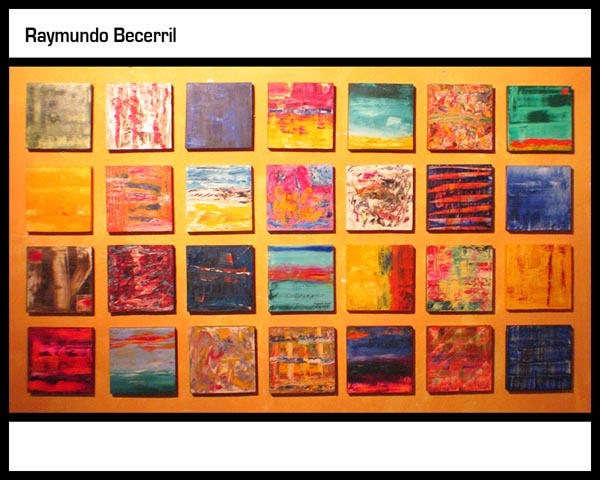
His background in three vastly different artistic mediums brings a unique perspective to Becerril’s creative projects, as his experience with one outlet has sometimes informed his work in another.
For instance, an often unnoted aspect of dance performances has impacted Becerril’s paintings – stage makeup. As Becerril explains, faces are a recurring subject in his paintings. “Thus,” he notes, “I have tried to bring to the canvas some of the effects that I achieved with makeup, in this case for the dancers or for myself when I danced.” His very decision to choose faces as one of his principal subjects came about because of his many years working with stage makeup.
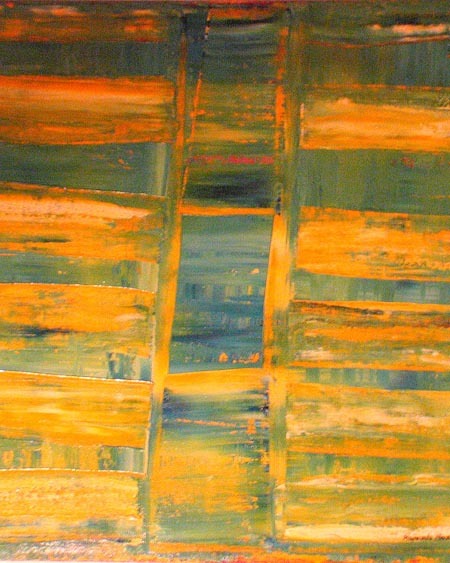
“Imagine having a face ten centimeters away from you and putting makeup on it,” he says, likening the experience to that of painting. In fact, a self portrait was conceived one day while Becerril was putting makeup on and suddenly zeroed in on his eye staring back at him in the mirror. From this experience was born an intense painting in which only part of his face is shown, with one visible eye as the focal point of the piece.
After his many years working so intimately with faces, it was only natural that Becerril would choose them as the focus of his artwork. But in his paintings, Becerril probes deeper than just the physical elements of a face, as it is the emotion conveyed on this most vulnerable of human canvasses that most interests him. “Emotions, stories – stories that I sum up in a face, in an image,” Becerril says.
One example the artist points to is his painting entitled “Regresaré,” which translates to “I Will Return.” The piece captures an androgynous face, which peers out from the canvas with defiant eyes, head turned towards the viewer. A cap sits on the subject’s head and a face wound is clearly visible.
Becerril says of the streak that represents the subject’s wound, “that little red spot was fortuitous.” The artist explains that he usually puts the paints right on the canvas from the very beginning and then draws from these colors when painting, instead of using a palette. In the case of “Regresaré,” Becerril was painting on a piece of wood in the aforementioned style and as he began fleshing out his subject, he noticed that a red spot with a bit of white had remained on the face. “It looked like a wound, it looked like a bandage that this character was wearing,” Becerril says. “So some said that (the character) is a police officer. And others said a soldier from Vietnam.” Some viewers have commented that the subject is a woman, while others see a man. Each person has his or her own interpretation of the painting.
As for Becerril, he says, “that face tells me many things. It tells me a story of nostalgia and anger at the same time.” Becerril explains that for him, the subject of his painting is an exile who was in a battle and then forced to leave, due to the risk of death or some other factor. However, the exile is turning to face the viewer as if to say, “I will return.”
“That expression is saying so many things that move me and that I believe have moved many people. Thus, when I paint faces it is basically that: trying to extract an emotion.”
Becerril often works with photographs that he has taken of his subjects. He sometimes changes the physical features of his subjects to give them a different age or race, but always works to capture the original emotions displayed on their faces. “There are faces that I have created which are totally different from the photos that I took them out of… but the expressions came out,” he notes. But even as Becerril captures his subjects’ emotions, it is up to the viewer to create a story for each face.
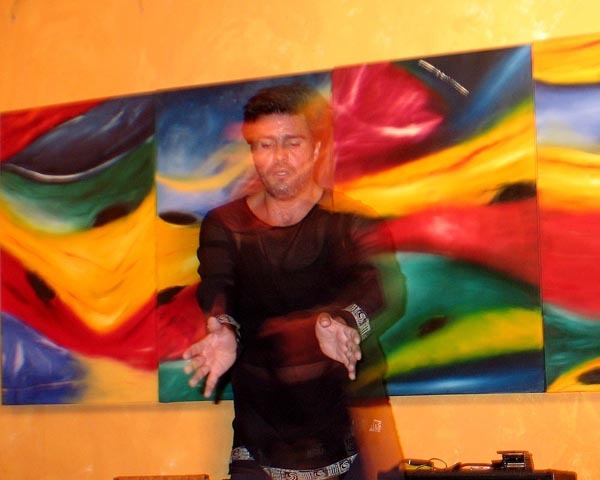
Becerril encourages this same process of individual interpretation with his abstract pieces, which account for a significant portion of his artwork. As he explains, “people come and say ‘oh look, there is a rabbit, oh look, there is a bird.’ And others say, ‘no, it’s not a bird, it’s a lizard…’ and I feel happy because people are seeing something there, they are giving (the painting) their own interpretations.”
Becerril entitled his most recent exposition “Evolución de Color” (Evolution of Color) for this very reason. “Even though there is already color and the painting is finished, its story or the very same color that is in my painting continues to evolve,” he explains.
Color plays an integral role in Becerril’s paintings, which often pulse with a vibrant energy. The artist mainly uses oils, which is what he began with when he first started painting a decade ago. He also uses acrylics, but still prefers oils, despite their reputation for being the hardest paints to work with. “I started with oil and at the time, I didn’t know it was the most difficult… but it is what I like the best,” he says.
Becerril’s artwork is rich with texture, due to the layering technique that he employs in his pieces. Unlike other artists who use plaster to achieve this effect, Becerril instead chooses to utilize layers upon layers of paint. As he explains, “the soul of the painting is the paint.”
He does not work with an easel, but instead moves the canvas from place to place, as the painting progresses during the process of creation. “I don’t paint in the traditional manner… suddenly I may put (the canvas) on the floor, give it some smears and then put it on the wall,” Becerril says. He chooses to spread the paint with either spatulas or large paintbrushes, which he prefers to finer brushes because of the texture they add. And from the streaks and spots and smears, a painting eventually materializes.
“Because I don’t know how to draw well, I don’t create sketches to see how I want the painting to come out,” Becerril explains. Instead, shapes emerge from the canvas, eventually seeming to take on a life of their own.
This spontaneous creation seems to be an inherent characteristic of Becerril’s personality. He seems to posses an almost palpable energy that grows ever stronger through his many creative endeavors. As Becerril explains, one creative activity often inspires him to begin work on another. “Many times when I am writing something, I am already imagining something that I am going to paint,” he says. “Or when I am painting something, I am already imagining a wardrobe or a dance.”
Due to his many activities, Becerril has learned to be disciplined so that he can focus on all of his projects. “Since I don’t have a lot of time, I have to organize myself to be able to do everything,” he notes.
It is this same creation that seems to feed Becerril’s energy and his very being. “For the simple fact that we are sensitive beings, we can’t stop making things, creating, seeing the world in another manner,” he says. “The faculty of being, of walking through the world, of seeing is born in the habit of creating – little by little – something, anything.”

